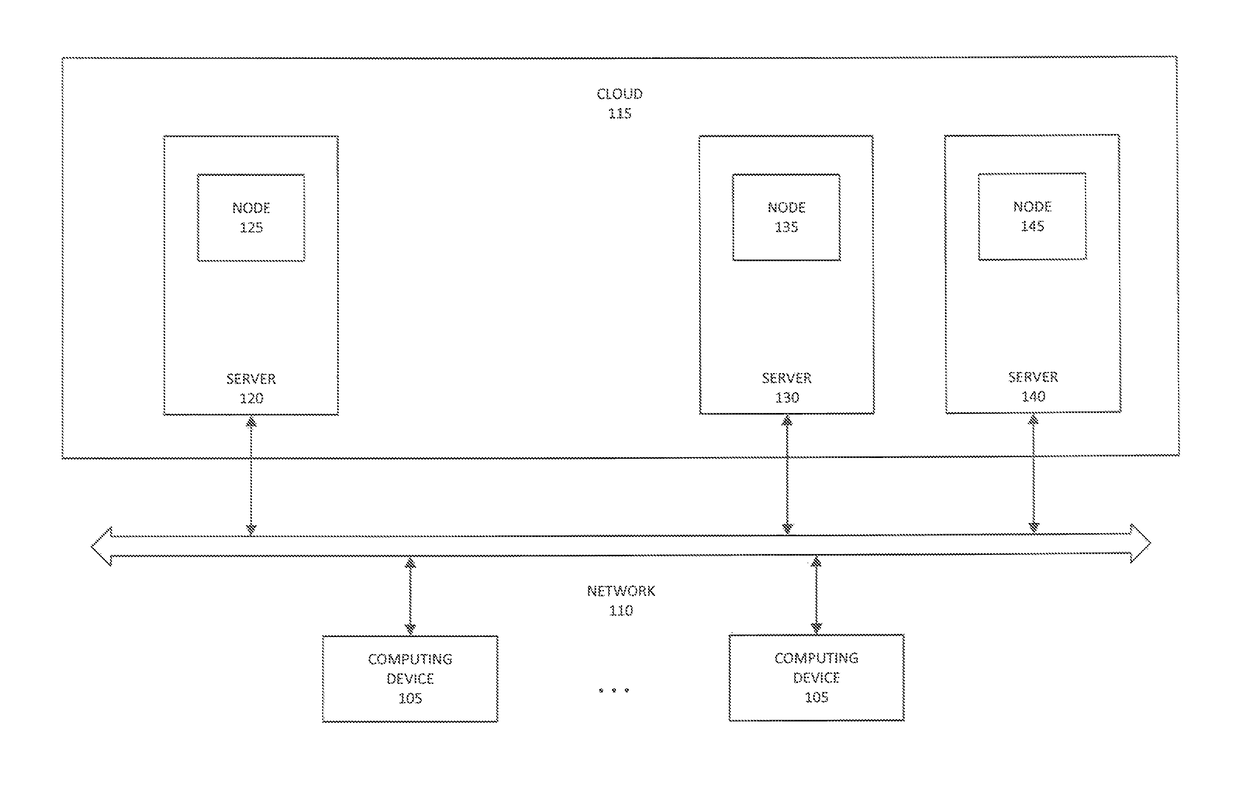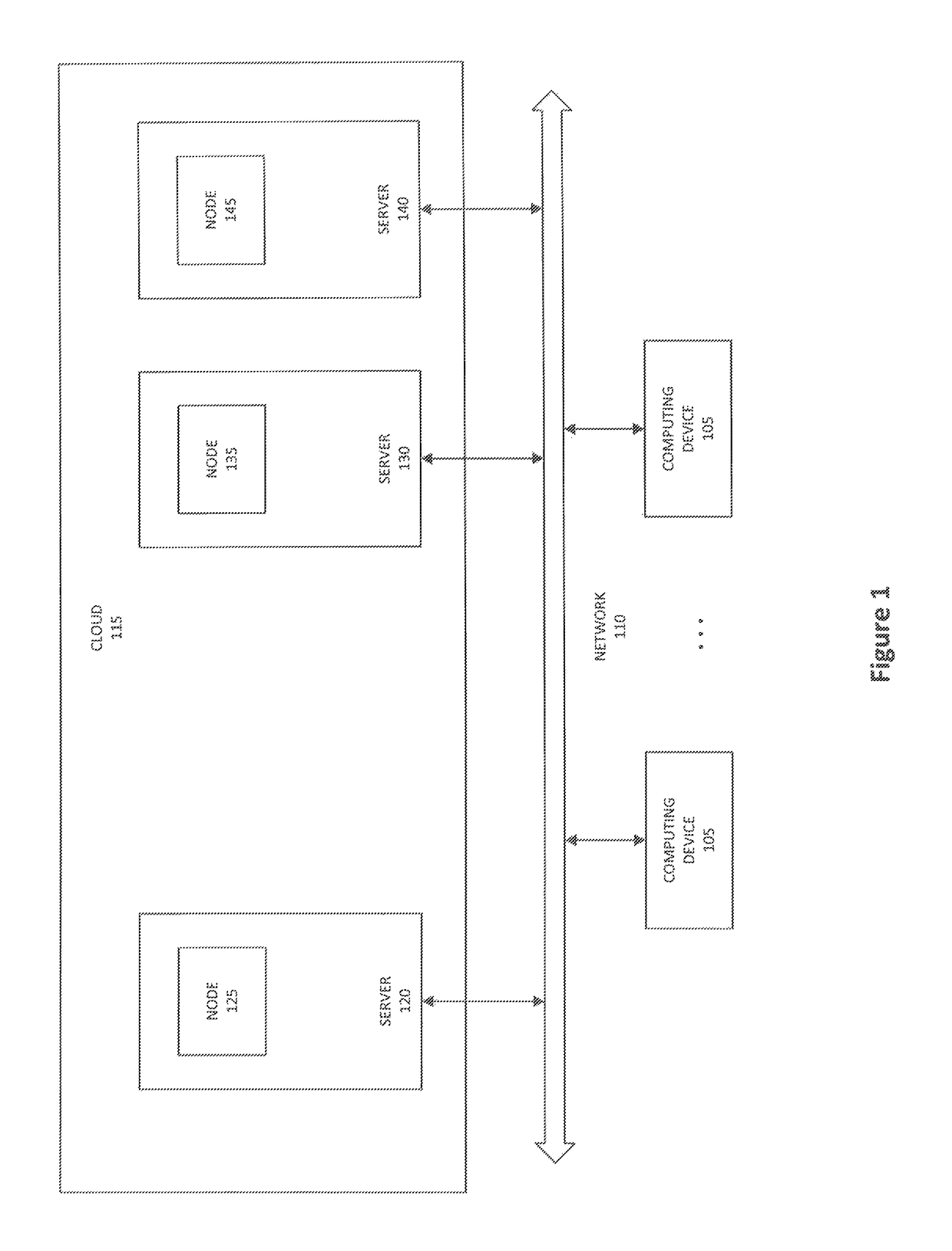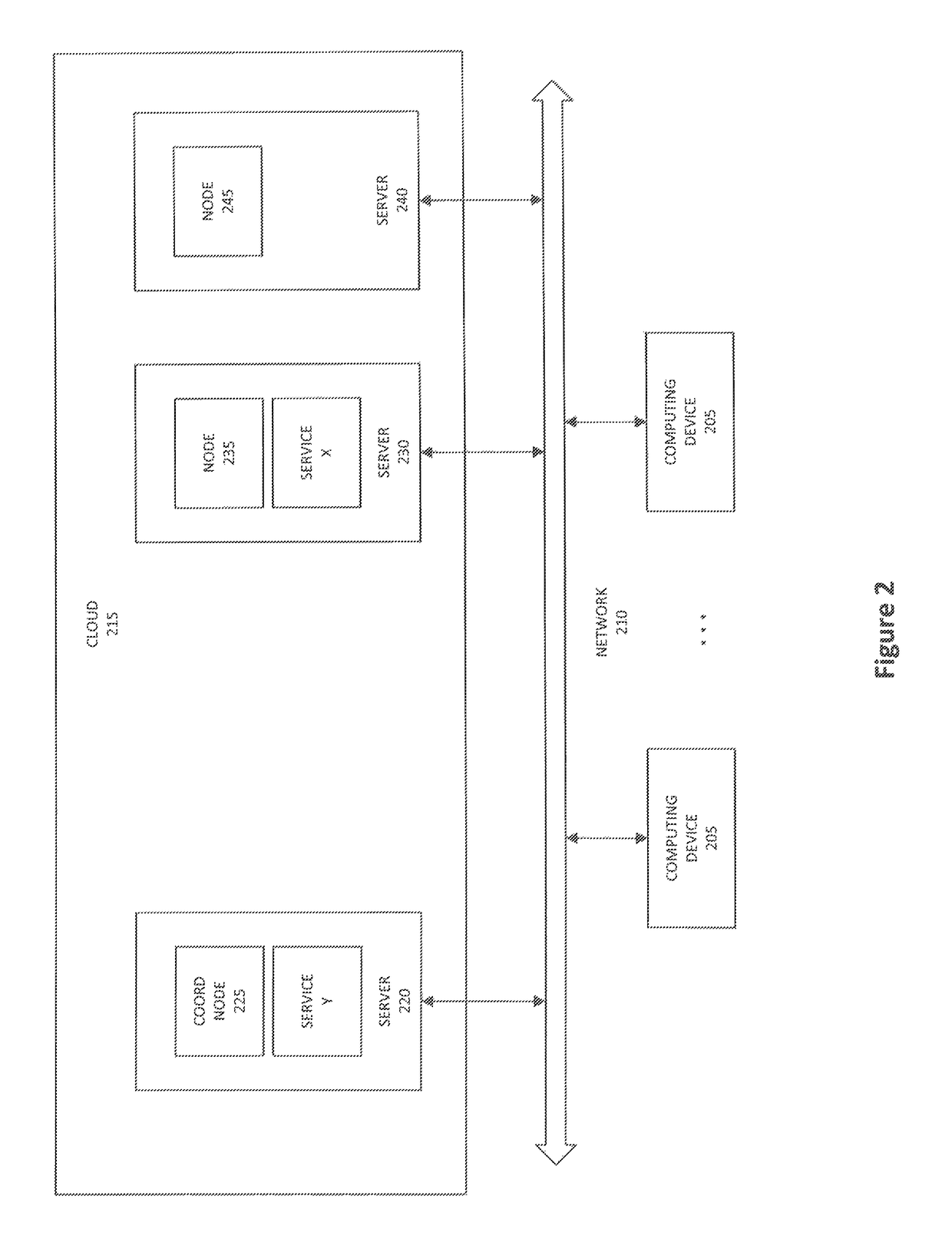System and method for optimizing web service availability with a node group agreement protocol
a node group agreement and web service technology, applied in the direction of transmission, electrical equipment, etc., can solve the problems of affecting the operation of the network, cloud and/or web service itself, and the popular utilization of web services can exceed the ability of server computers to provide, so as to reduce workload, reduce workload, and maximize utilization of processing functions
- Summary
- Abstract
- Description
- Claims
- Application Information
AI Technical Summary
Benefits of technology
Problems solved by technology
Method used
Image
Examples
Embodiment Construction
[0013]In an embodiment of the invention, a Multicast Group Agreement Protocol (MGAP) is implemented by an algorithm performed by each node in a node group. FIG. 1 is a system diagram of a client / server environment in which the MGAP algorithm may be employed. As shown in FIG. 1, any number of computing devices 105 may be connected over a network 110 to multiple servers within a cloud 115. Each server contains a node which comprises essential processing elements such as a microprocessor and is capable of bidirectional communication with the other nodes in the node group contained by each of the other servers shown. Specifically, in the exemplary system shown in FIG. 1, server 120 contains node 125, server 130 contains node 135, and server 140 contains node 145.
[0014]FIGS. 2-4 show a system with a same overall configuration as the system shown in FIG. 1, but containing more specific information, with each Figure corresponding to a different state of operation depending on various circu...
PUM
 Login to View More
Login to View More Abstract
Description
Claims
Application Information
 Login to View More
Login to View More - R&D
- Intellectual Property
- Life Sciences
- Materials
- Tech Scout
- Unparalleled Data Quality
- Higher Quality Content
- 60% Fewer Hallucinations
Browse by: Latest US Patents, China's latest patents, Technical Efficacy Thesaurus, Application Domain, Technology Topic, Popular Technical Reports.
© 2025 PatSnap. All rights reserved.Legal|Privacy policy|Modern Slavery Act Transparency Statement|Sitemap|About US| Contact US: help@patsnap.com



